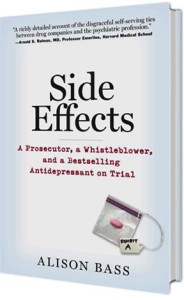Ever heard of the term “culture of disability?” It was first coined by Judith Greenwood, who published a paper in the ’80s about how the coal mining industry in West Virginia, because the jobs were so difficult and dangerous, had created a culture where injured or unemployed miners endeavored to get a diagnosis that would earn them a disability check so they could continue to feed themselves and their families. When doctors began readily prescribing potent opiate-based painkillers (like OxyContin and Vicodone) more than decade ago, the reliance on these drugs fed right into this culture of disability and created a monstrous public health problem in West Virginia.
As I blogged about here, West Virginia now has the second highest rate of prescription drug overdoses in the country, and a large part of that problem can be traced back to the state’s culture of disability, according to one health researcher at West Virginia University. For instance, you might have an injured worker who wants out of mining and if he can prove he is disabled for life, that gives him a way out.
These drugs, of course, are extremely addictive and in West Virginia, it is no longer just former coal miners who are addicted to such potent opiates as Oxycodone, Vicodone and fentanyl. Many people, including the sons and daughters of coal miners, are getting high from these drugs and ripping apart the fabric of their communities, according to Days of Destruction, Days of Revolt, the powerful book about poverty in America by Pulitzer-Prize winning author Chris Hedges and Joe Sacco.
As Hedges and Sacco note, “the reliance on government checks and a vast array of painkillers and opiates has turned towns like Gary [in McDowell County] into modern opium dens.” West Virginians are getting these drugs not only from illegal online pharmacies (which appear and disappear faster than the authorities can shut them down) but also from dealers who travel from clinic to clinic in Florida to stock up on the drugs and then sell them out of the back of trucks in West Virginia.
They’re also getting the pills from grandma and grandpa. As Hedges and Sacco report:
“Those who have legal prescriptions also sell the drugs for a profit. Pushers are often retirees. They can make a few hundred extra dollars a month on the sale of their medications. The temptation to peddle pills is hard to resist.”
As a result, West Virginia not only has the second highest rate of prescription drug overdoses in the nation, but it has a growing crime problem as well. People who are addicted to legal and illegal drugs are desperate to make the money to buy their next fix. So some will do whatever they can do to get that money, even it involves stealing or robbing someone at gunpoint.
This might explain why theft is such a problem even in a college town like Morgantown, which sits pretty in the hills of northern West Virginia. The pickings, after all, are easy: inebriated college students stumbling home from the downtown bars late at night. For a recent assignment, one of my journalism students quoted West Virginia University’s Police Chief Bob Roberts saying that WVU’s downtown campus had a particular problem with theft. He counseled students not to wander around late at night by themselves and to be careful about displaying an expensive ipod or smartphone even during the day.
West Virginia is now beginning to clamp down on doctors in the state who prescribe opiods and the pharmacies that dispense them, no questions asked. The university is also developing educational programs for the secondary schools to raise awareness about the dangers of opiate painkillers. But the cat is out of the bag and improving the state’s record on prescription drug abuse will take a concerted effort on the part of its health and law enforcement officials.
As Hedges and Sacco note, it will also take a recognition on the part of state officials that the mining or “extractive” industry as it is known, has systematically stripped West Virginia of much of its natural resources and left very little in return, other than a trail of pain, addiction and poverty.



Welcome to Appalachia. The trail of pain, addiction and poverty extends up the mountains from North Georgia, through East Tennessee and Western Carolina, on into Kentucky, West Virginia, and northward. The Moonshine of old, morphed into Meth Labs, now into Pain Pills. The sad part is that the pain in the culture is palpable…
Excellent point, Mickey! And of course, the extractive industry extends all through Appalachia. Which came first, meth or mining?